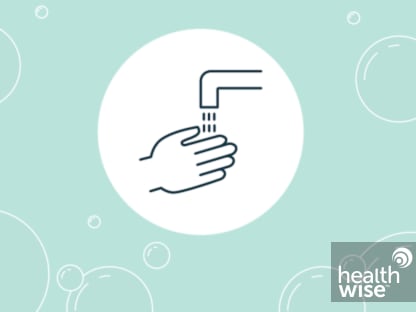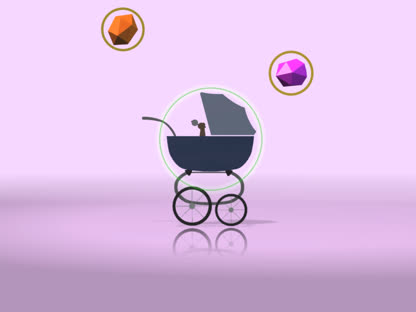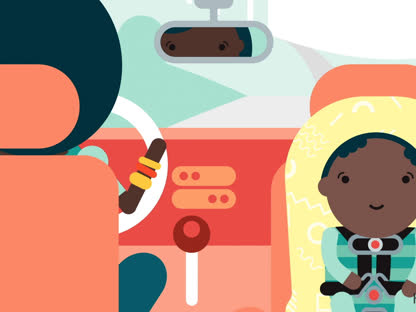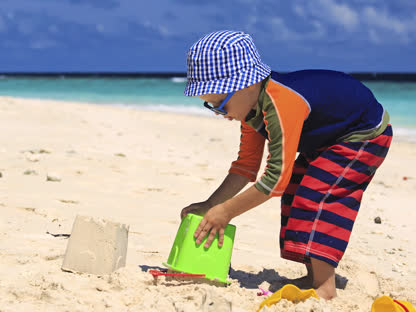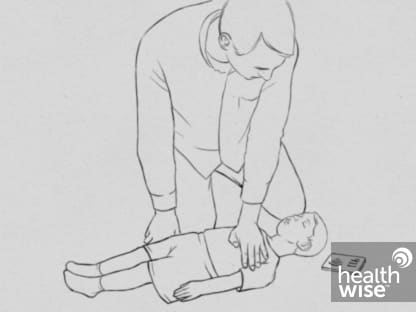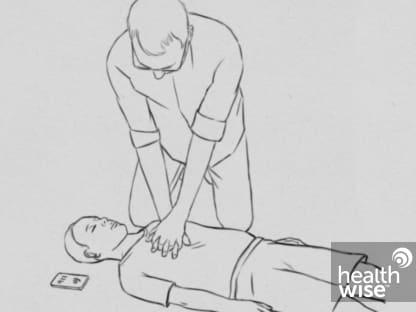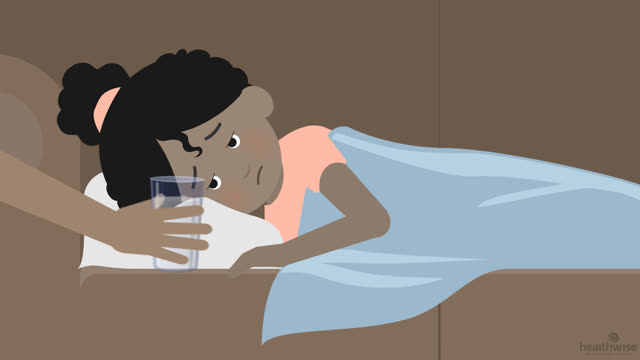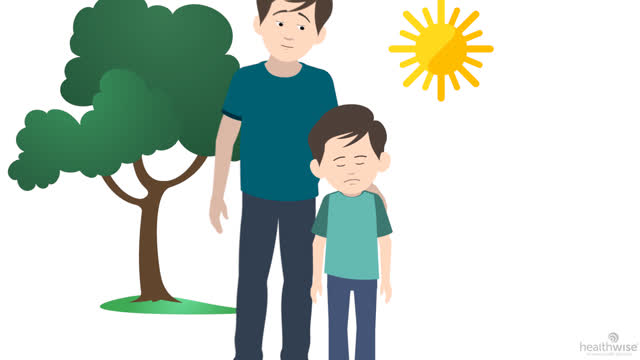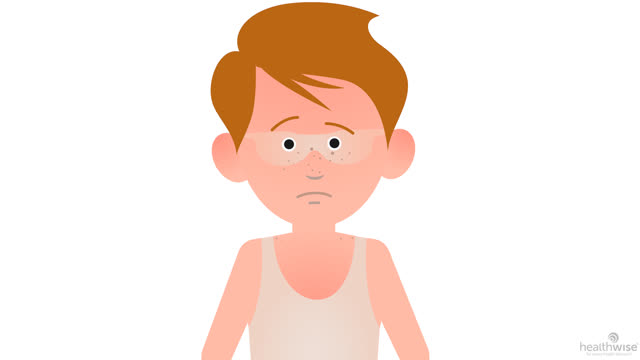Health and Safety, Ages 2 to 5 Years
Make an Appointment
Our team is here to help you make an appointment with the specialists that you need.
Health and Safety, Ages 2 to 5 Years
Overview
What can you expect from your child at this age?
Children in this age range are gaining many new skills. They feel more and more independent. They may be curious, want to explore the world around them, and act without thinking.
At this age, children see everything that happens as it relates to themselves. And they believe that what they wish for or expect to happen can affect what really happens. They overestimate what is in their control, which contributes to their vulnerability. They are often unaware of the consequences of their actions. This can lead to dangerous situations.
You can help decrease any dangers by accepting that your child will go through active and curious phases. Think about what you can do to avoid safety hazards. If your child is discovering the joys of riding a tricycle, for example, be sure to make riding in the street off-limits.
You can also find behaviors to teach and model. For example, if you wash your hands before you eat, your child will probably also do this.
Remember that no one can watch a child's every move or make a home 100% safe all the time. Try to find a balance for supervising your child, taking safety precautions, and allowing your child to explore. Learn all you can about your child's growth and development. Doing so can help you learn how to respond to and make a positive impact on how your child behaves.
What can you do to help keep your child safe?
Your child is gaining in confidence and probably wants to explore. But your child still needs your close supervision and guidance.
You can keep your child safe by following these basic tips.
- Set limits.
Set up and consistently enforce rules and limits to help your child learn about dangers.
- Teach some basic safety rules and precautions.
Do this inside and outside the home. For example, teach your child to always use the car seat and that ovens and toasters can cause burns. Talk with other caregivers about what problems could arise and how to prevent them.
- Practice healthy habits.
Protect your child against illness and infection. For example, wash your hands often, keep toys clean, make sure your child is immunized, and go to all well-child visits.
- Take safety measures around the home.
For example, store poisonous products out of your child's reach, and use safety covers on all electrical outlets.
How can your stress level affect your child's safety?
Taking care of yourself is a vital part of keeping your child safe. Most injuries to children occur when parents or caregivers are tired, hungry, or emotionally drained or are having relationship problems. Other common causes of family stress include changes in daily routines, moving to a new house, and expecting another child.
If you feel stressed, get help. Talk to your doctor or your child's doctor, or see a counselor. Get together regularly with friends. Or you can join a parenting group.
Call 911 right away if you feel that you are about to hurt yourself or your child.
Health Tools
Health Tools help you make wise health decisions or take action to improve your health.
Healthy Habits for Preventing Infection and Illness
Colds and flu can occur at any time of year. These upper respiratory infections (URIs) spread easily. Babies and young children have a higher risk for secondary infections from these illnesses. Take extra care to help protect your child against infections.
- Have your child immunized.
Be sure your child gets all needed vaccines (immunizations). These vaccines provide important protection for your child against harmful disease. Be sure all visitors are up-to-date with their vaccines.
- Avoid germs and people who are sick.
Keep your child away from other people who are obviously ill. And avoid exposing your child to a large crowd, especially when an easily spread illness is going around.
- Wash your hands often.
If soap and water aren't available, use a hand sanitizer or an alcohol-based hand wipe.
- Wash and disinfect toys often.
- Prepare food safely.
Wash your hands and working surfaces while you prepare food. Cook foods to safe temperatures, and refrigerate foods promptly.
Learn more
Watch
Safety Measures Around the Home
As your child grows and develops, you'll need to keep checking the safety of your home. Accidental injuries are one of the leading causes of death in children younger than age 5. Keep asking yourself the following questions to help you learn how your child's skills can affect his or her safety in the home:footnote 1
- How quickly and how far can my child move?
- How far and how high can my child reach?
- What household objects attract my child's attention?
- What is my child learning to do today that he or she couldn't do before?
- What can I expect my child to do tomorrow that he or she doesn't do yet?
Keeping your child safe around the home
You can't protect your child from every danger that your child can possibly encounter. But you can take reasonable precautions and teach your child basic safety rules. This general training can help prepare your child for many situations they may face. You can help protect your child from accidents and injuries by taking safety measures around your home. Think ahead about what possibly dangerous things will attract your child. Supervise your child. But keep in mind that constant hovering over children can limit their experiences and confidence. Balancing supervision with safety precautions will help prevent accidents and injuries, as well as allow children to explore.
Prevent accidents by using safe equipment, teaching safety awareness, and closely supervising your child.
- Check that all the products your child uses meet current standards.
You can check recall information from the U.S. Consumer Product Safety Commission online at www.cpsc.gov or by calling 1-800-638-2772.
- Until your baby's first birthday, place your baby to sleep on their back to help prevent sudden infant death syndrome (SIDS).
- Prevent falls.
You can prevent many falling accidents by using common sense and appropriate equipment that meets all safety standards.
- Watch for choking.
You can help prevent your child from choking by offering the right kinds of foods and watching for choking hazards.
- Keep your child's sleep and play area safe by removing items that can cause strangulation and suffocation.
- Identify any products that could harm your child when eaten or inhaled.
- Warn your child about the dangers of fire.
Young children are often curious about fire. Explain why only grown-ups are allowed to use it.
- Keep guns away from children.
All guns and firearms should be kept in a locked area, unloaded, and out of reach of children. Also store knives (even kitchen knives), swords, and other weapons safely out of reach.
- Teach children how to interact with pets.
- Supervise bath time, and never leave your child alone near water of any kind.
Learn more
Safety Measures Outside the Home
You can't protect your child from every danger he or she can possibly encounter outside the home. But you can take reasonable precautions and teach your child basic safety rules. This general training can help prepare your child for many situations he or she may face.
Prevent accidents by using safe equipment, teaching safety awareness, and closely supervising your child.
- Help your child become street-smart.
Teach your child basic rules about the dangers of cars and streets.
- Always use a car seat.
Follow basic guidelines established by the American Academy of Pediatrics (AAP). See the AAP website at www.healthychildren.org to learn more.
- Never leave your child alone in a car.
Heat inside the car and other factors could cause long-lasting injury—or death—in a matter of minutes. Keeping the car windows down won't protect your child in hot or warm weather. Other injuries could also occur from a child getting stuck in the trunk or setting the car in motion.
- Help prevent child abduction.
Teach children to be cautious of strangers. And teach them how to react when they feel they are threatened. Remember that most children who are abducted aren't taken by strangers. They're taken by a parent, a relative, a family friend, or an acquaintance.
- Keep your child safe near water.
Never leave your child unattended near water. Watch children closely around pools and hot tubs. Don't let them play near irrigation canals.
- Keep your child safe on the playground.
Make sure that all play equipment is safe, in good repair, and right for your child's age. Closely supervise all young children while they play on any equipment.
- Use extra caution when riding bicycles or tricycles.
Make sure that you and your child always wear helmets and practice safe riding habits, such as avoiding busy streets. Bike only during daylight hours.
- Keep your child safe in strollers and shopping carts.
Use the safety straps, and follow the printed instructions. It's safest not to put children in shopping carts at all.
- Protect your child from too much sun.
Keep babies younger than 6 months out of the sun. Older babies and children need to stay in the shade or cover up with a hat and clothing when outdoors from 10 a.m. to 4 p.m. Have your child wear UV-blocking sunglasses. And put broad-spectrum sunscreen (SPF 30 or higher) on any exposed skin, even when it's cloudy.
- Protect your child from too much heat when outdoors.
Be careful that your child doesn't get heat exhaustion from being out in warm temperatures. Small bodies can develop these problems much more quickly than adults. Don't keep your child out in warm weather for long periods. And keep water or other drinks on hand.
- Use insect repellents to prevent bites and stings.
Take action to lower your child's chances of being stung by an insect. Have your child wear socks, closed shoes, and clothes that fully cover his or her body when outdoors.
- Monitor air pollution when planning to take your child outdoors.
Children's lungs are especially sensitive to pollution. You can check your newspaper or local weather station for details about air pollution levels.
- Voice your concerns about safety.
Before your child visits an unfamiliar home, ask if you need to be aware of any dangerous areas, weapons in the home, pets, or other safety issues. It's always a good idea to see the household for yourself. Don't be afraid to speak up about your safety concerns. You are in charge of protecting your child.
- Know when to increase your child's activities.
Watch for physical signs that show that it's safe to gradually include your child in your activities. When children can run or climb, it's usually a good sign that they are getting stronger and can keep their balance. Before and after these signs appear, use good judgment for your child's comfort and safety.
Learn more
Watch
Parent Self-Care
Many parents wonder if they can handle the responsibility of keeping their child safe. You will likely feel more confident if you are alert, take all the precautions you can, and know how to respond to emergencies.
- Learn first aid and cardiopulmonary resuscitation (CPR).
Classes usually are offered through your local hospital or fire department.
- Read and learn about child growth and development.
Knowing what to expect can help ease the fear of the unknown.
- Join a support group.
Parenting groups can help you learn new skills and help ease emotional issues of having a child. Groups differ in their focus. Some target specific concerns, such as feeding your child. Others offer parents a chance to get together with their children for playtime and visiting. Contact a local hospital or religious group, or ask your doctor for resources in your area. Online parenting groups are also available.
Connection between parent well-being and child safety
Taking care of yourself is a vital part of keeping your child safe. Accidents can occur at any time. But many happen during times of too much stress, such as when:
- Parents and children are hungry and tired.
- Another baby is expected.
- Relationship problems develop.
- Major changes in the routine or environment occur. For example, a child's caregiver changes, the family moves, or a parent leaves because of military duty.
Recognize the signs of stress and what situations cause it. Be extra careful during these times. Take care of yourself and your personal relationships.
Seeking help
All parents have times when they feel exhausted, frustrated, angry, sad, or overwhelmed. This is a normal part of being human and a parent. But if these feelings become too much for you to handle alone, keep your child safe by getting help. For example, when your emotions are too much for you to handle alone, you may not have the energy or desire to watch your child as closely as you should. And some parents injure their children when their emotions cause them to shake, hit, or push them.
Places to go for help include:
- Your family health professional (such as a family medicine doctor or pediatrician).
- A licensed mental health counselor.
- Your local hospital.
- Parenting organizations.
Call 911 right away if you feel that you are about to injure yourself or your child.
Learn more
Watch
Credits
Current as of: October 24, 2024
Author: Ignite Healthwise, LLC Staff
Clinical Review Board
All Healthwise education is reviewed by a team that includes physicians, nurses, advanced practitioners, registered dieticians, and other healthcare professionals.
Current as of: October 24, 2024
Author: Ignite Healthwise, LLC Staff
Clinical Review Board
All Healthwise education is reviewed by a team that includes physicians, nurses, advanced practitioners, registered dieticians, and other healthcare professionals.
This information does not replace the advice of a doctor. Ignite Healthwise, LLC, disclaims any warranty or liability for your use of this information. Your use of this information means that you agree to the Terms of Use. Learn how we develop our content.
To learn more about Ignite Healthwise, LLC, visit webmdignite.com.
© 2024-2025 Ignite Healthwise, LLC.
This information does not replace the advice of a doctor. Ignite Healthwise, LLC, disclaims any warranty or liability for your use of this information. Your use of this information means that you agree to the Terms of Use. Learn how we develop our content.
